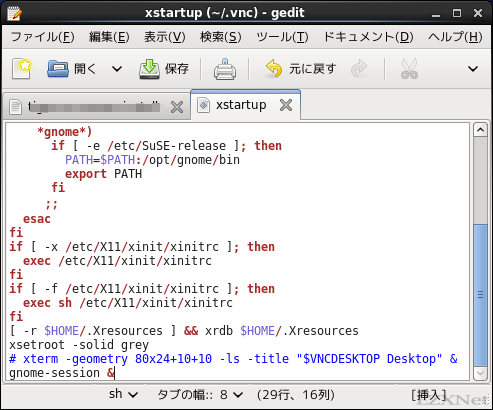

Start user1 VNC server on display 1, and user2 on display 2: systemctl start :1.service If you are going to start user1 on display 1, and user2 on display 2, then you have to open both tcp ports 59 on the firewall. If you are using a client, typically only 5900+display# is needed. If you are depending on the server to give you a java applet, you also need 5800+display#, and 6000+display# for the X Server Port.VNC listens on 5900+diplay# when using a VNC client.You would edit each file the same way we did in the single user setup, this time you would change to the specific username that file is for. The only difference is you MUST create multiple service files, set both users VNC passwords, and open additional ports in the firewall.įor example, you could create two service files like so: cp /lib/systemd/system/ /etc/systemd/system/ Ĭp /lib/systemd/system/ /etc/systemd/system/ If you want to setup VNC server for multiple users the directions are basically the same.
TIGERVNC SERVER APPLET HOW TO
Open VNC port using iptables: How to Configure VNC for Multiple Users Open VNC Port using firewalld: firewall-cmd -add-rich-rule='rule family="ipv4" service name=vnc-server accept' Here are some example that should work on default configurations. If we started it with display number 2, it would listen on 5902.įirewall configuration are very specific to the system. For example, we started the service above with the display number 1.

VNC Servers listen on ports specific to their display number. You must allow or open the firewall to allow vnc connections. If you want the service to start at boot: systemctl enable :1.service Configure Firewall For VNC
TIGERVNC SERVER APPLET PASSWORD
This command MUST be run by the user, so let’s switch to the user account and set the password like so: ~]# su - vncuserīefore we log into the system with VNC, we have to start the service. Now you have to set the VNC password for the user you specified in the file above. To make the changes to the configuration file take effect, run the following command: systemctl daemon-reload Setup User with vncpasswd NOTE: Change to the username of the account who will be logging into the system. # Clean any existing files in /tmp/.X11-unix environmentĮxecStartPre=/bin/sh -c ‘/usr/bin/vncserver -kill %i > /dev/null 2>&1 || :’ĮxecStart=/sbin/runuser -l -c “/usr/bin/vncserver %i”ĮxecStop=/bin/sh -c ‘/usr/bin/vncserver -kill %i > /dev/null 2>&1 || :’ Now we have to edit the /etc/systemd/system/ file and at minimum must change the USER name who will be connecting to the VNC server. cp /lib/systemd/system/ /etc/systemd/system/
TIGERVNC SERVER APPLET INSTALL
When you install tigervnc it creates a sample configuration file in /lib/systemd/system that is called It is best to copy this file and edit it to meet your needs. Use yum to install tigervnc-server package: yum install tigervnc-server Copy Sample Configuration and Edit Let’s install and configure VNC for a single user, then we will cover how to install VNC for multiple users. In CentOS 7 (or RHEL 7) the default VNC server is tigervnc. How can I install and configure a VNC server on my CentOS 7 system so I can “Remote Desktop” into it?Ī: This can be done easily with the some basic software. I have done some reading and understand I need to use VNC for this. Q: I am coming from the Windows world where I am used to using Remote Desktop to access my systems on the network.


 0 kommentar(er)
0 kommentar(er)
